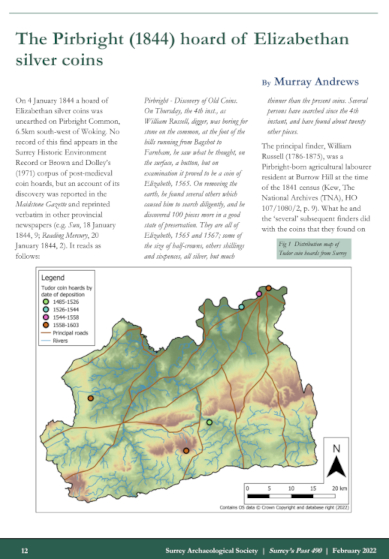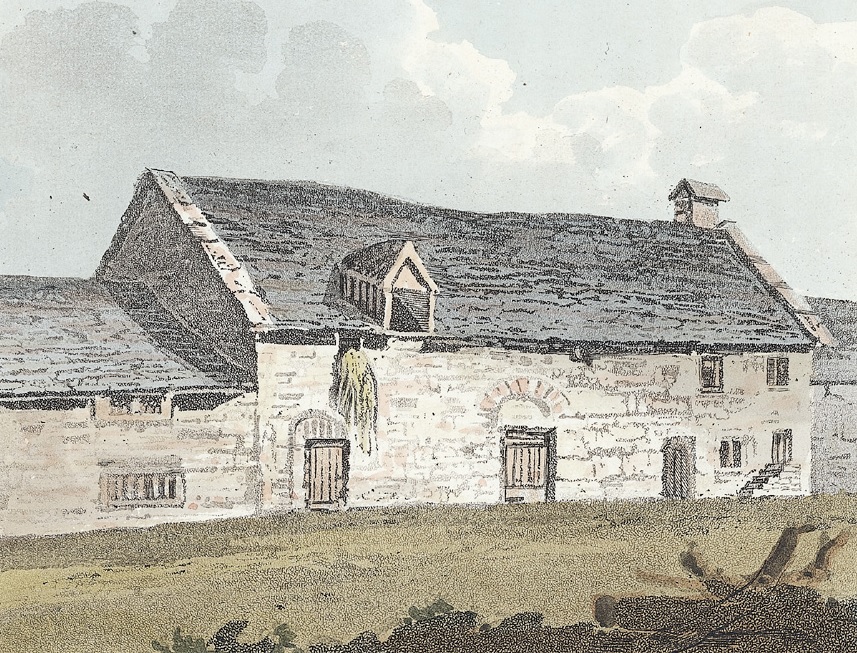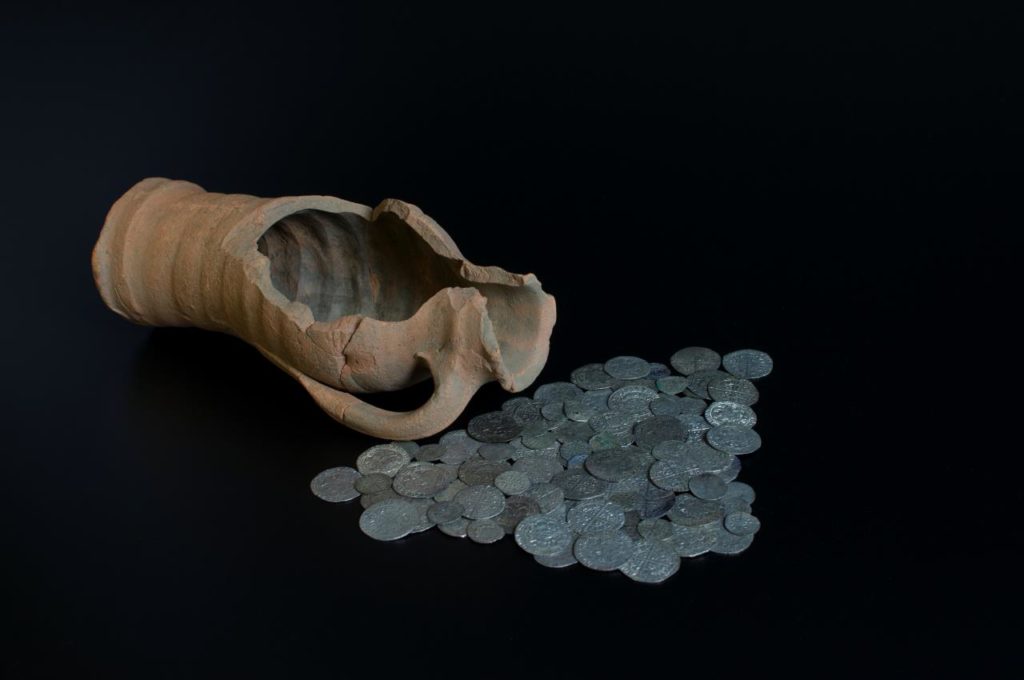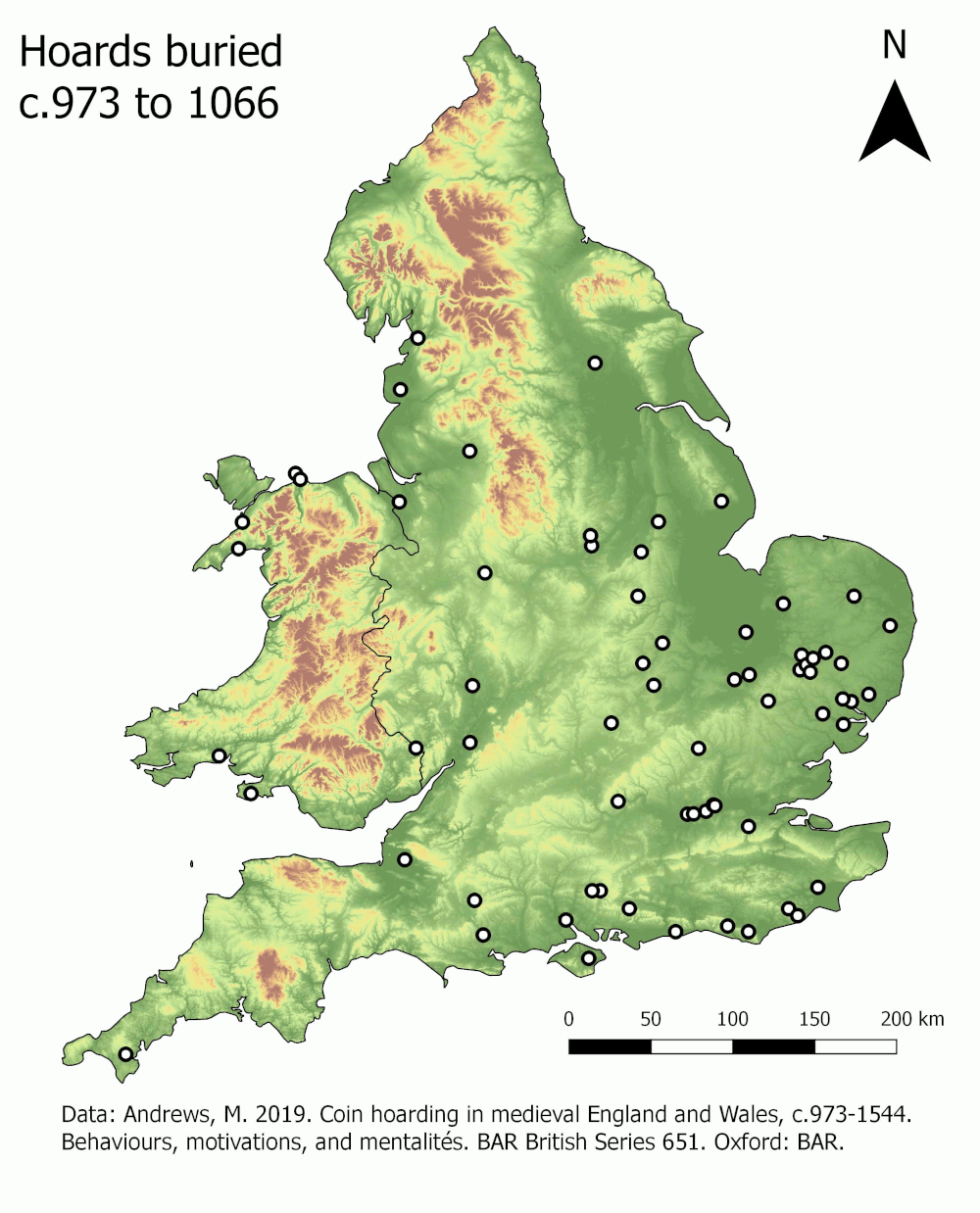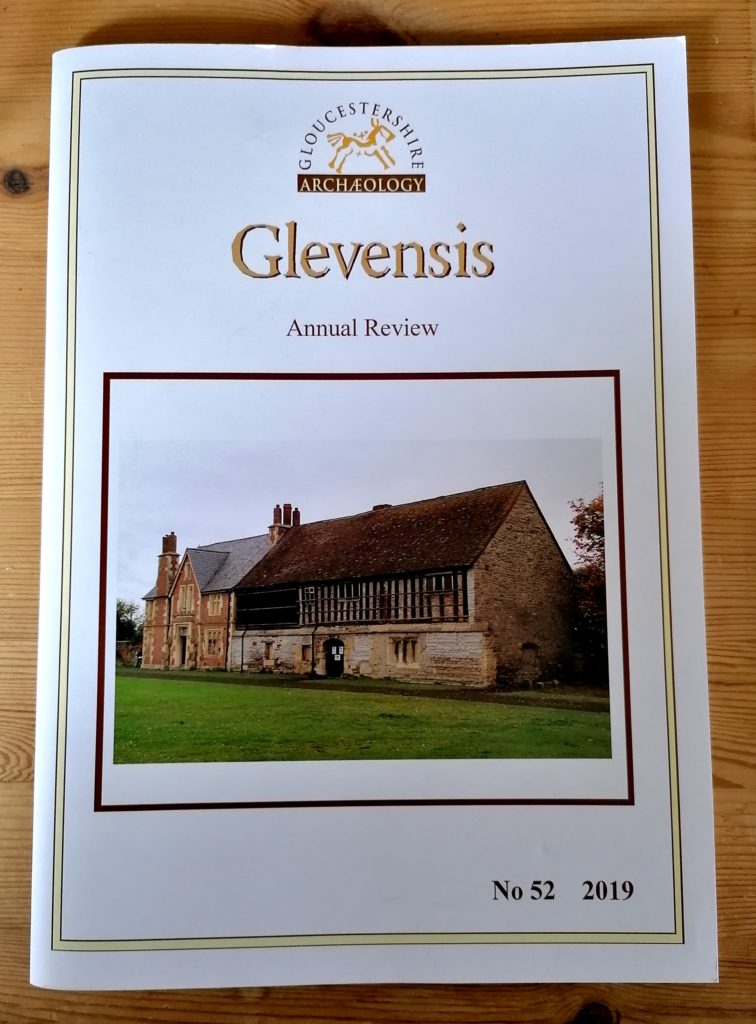The latest edition of the Surrey Archaeological Collections has just been published, and features a report by me on Roman coins excavated at the Science Gallery on the Kings College London Guy’s Campus.

The Science Gallery site was excavated by Pre-Construct Archaeology Ltd in 2016-17, and the site report by Alistair Douglas contains some fantastic evidence for activity on the south bank of the Thames from prehistory to the present day. During the Roman period the site was drained and repurposed for agricultural and industrial use, but prolonged flooding left it largely abandoned between the later 4th and 13th centuries.
My section of the report focuses on the coins from the site, nearly all of which are associated with late Roman activity. They include a small hoard of seven bronze nummi hidden or lost in horticultural soil in c.367-78. This is the first Valentinianic bronze hoard to be found in London and Southwark, and one of only three known from the whole of Greater London. The hoard is a fascinating snapshot of currency in circulation on the south bank of Roman Londinium, and provides strong evidence for a continued need for small change at a time of percieved ‘urban decline’.
If any of this interests you, why not have a look? To order your copy, visit the website of the Surrey Archaeological Society.
For a full list of my publications to date, check out the ‘Publications’ page on this website.
